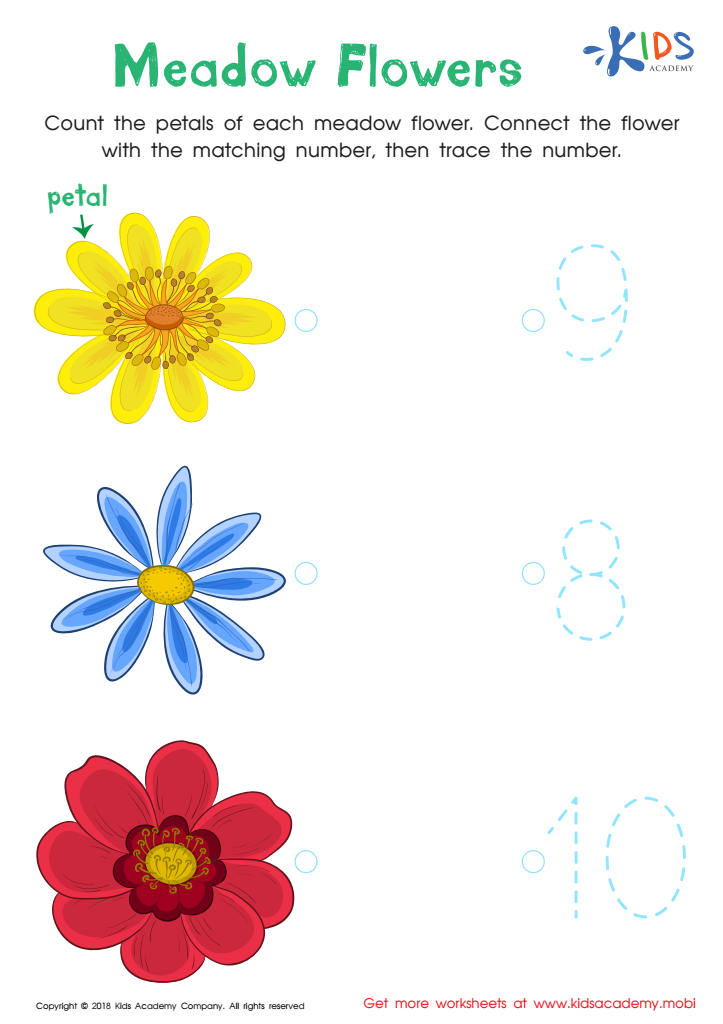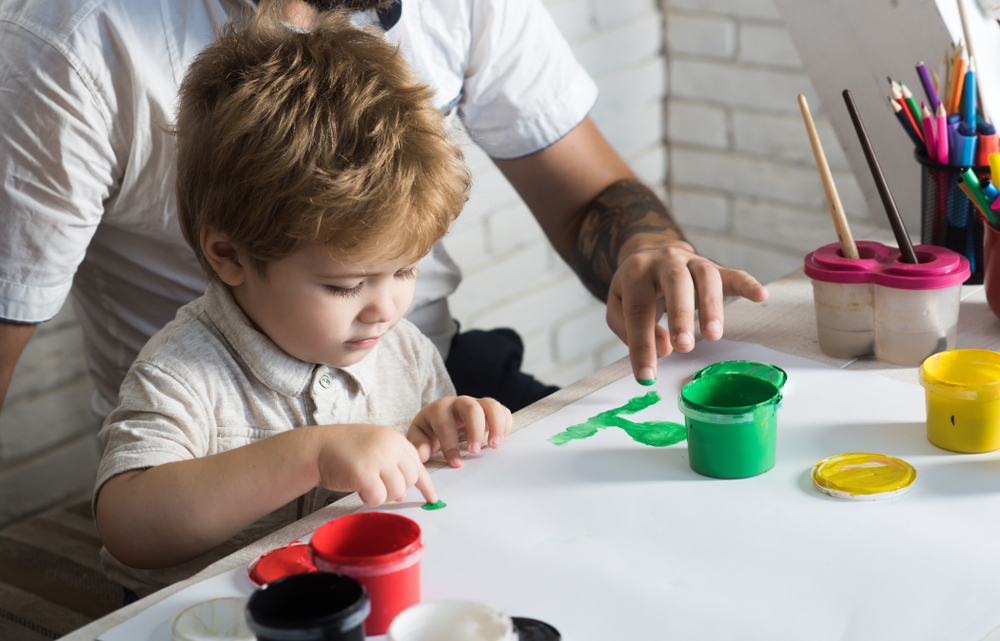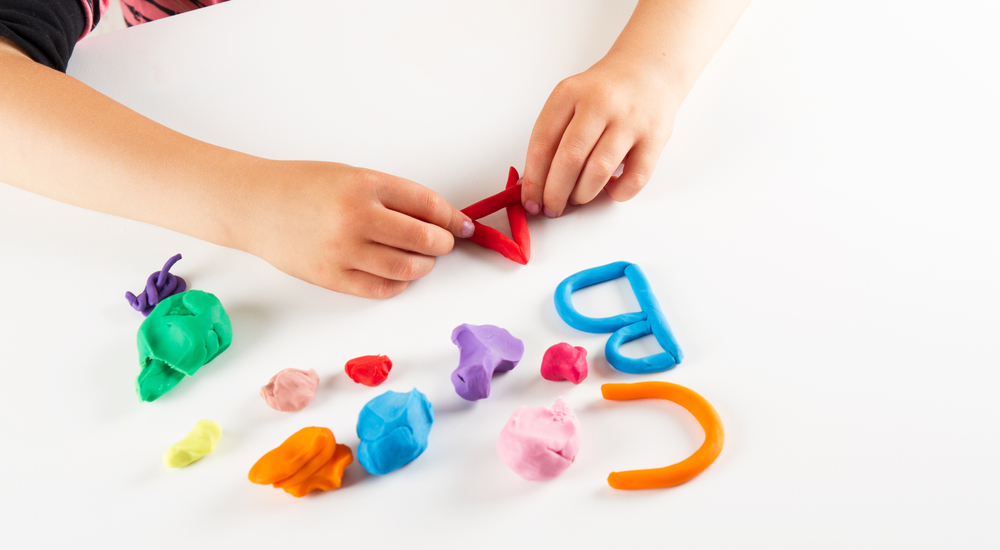Tracing worksheets activities for 4-Year-Olds - Page 7
145 filtered results
-
From - To


Kindergarten Number Tracing: Medow Flowers Worksheet
Tracing worksheets activities are an invaluable resource in the developmental journey of young learners. These simple yet effective tools offer a plethora of benefits that extend beyond just improving handwriting skills. The significance of tracing worksheets activities lies in their multifaceted approach to fostering essential developmental milestones in children.
First and foremost, tracing worksheets activities enhance fine motor skills. The act of tracing lines, shapes, and letters requires precision and control, which strengthens the small muscles in a child's hands and fingers. This improvement in dexterity is not only crucial for writing but also for other day-to-day tasks such as tying shoelaces, buttoning shirts, and using utensils.
Furthermore, tracing worksheets activities serve as a foundational step for literacy. They introduce young learners to the alphabet in an interactive and engaging manner. By tracing letters, children become familiar with their shapes and sounds, setting the stage for reading and writing fluency. This hands-on experience with letters helps to imprint their forms in a child's memory, making it easier for them to recall and recognize letters in different contexts.
Additionally, tracing worksheets activities boost cognitive skills. They require concentration, attention to detail, and the ability to follow instructions. As children focus on tracing within the lines or following a specific sequence of movements, they develop their visual-spatial awareness and learn to process information more effectively. This skill is instrumental in areas beyond writing, including math, where understanding spatial relationships is key.
Moreover, tracing worksheets provide an opportunity for creative expression. Once children become comfortable with tracing, they can start to explore their creativity by adding their own touches to the worksheets, such as colors, patterns, or even attempting to draw freehand.
In summary, tracing worksheets activities are far more than just a writing exercise. They are a comprehensive educational tool that aids in the development of fine motor skills, literacy, cognitive abilities, and creative expression. By incorporating these activities into early learning, educators and parents can provide children with a solid foundation for future academic success and everyday life skills.
 Assign to the classroom
Assign to the classroom












